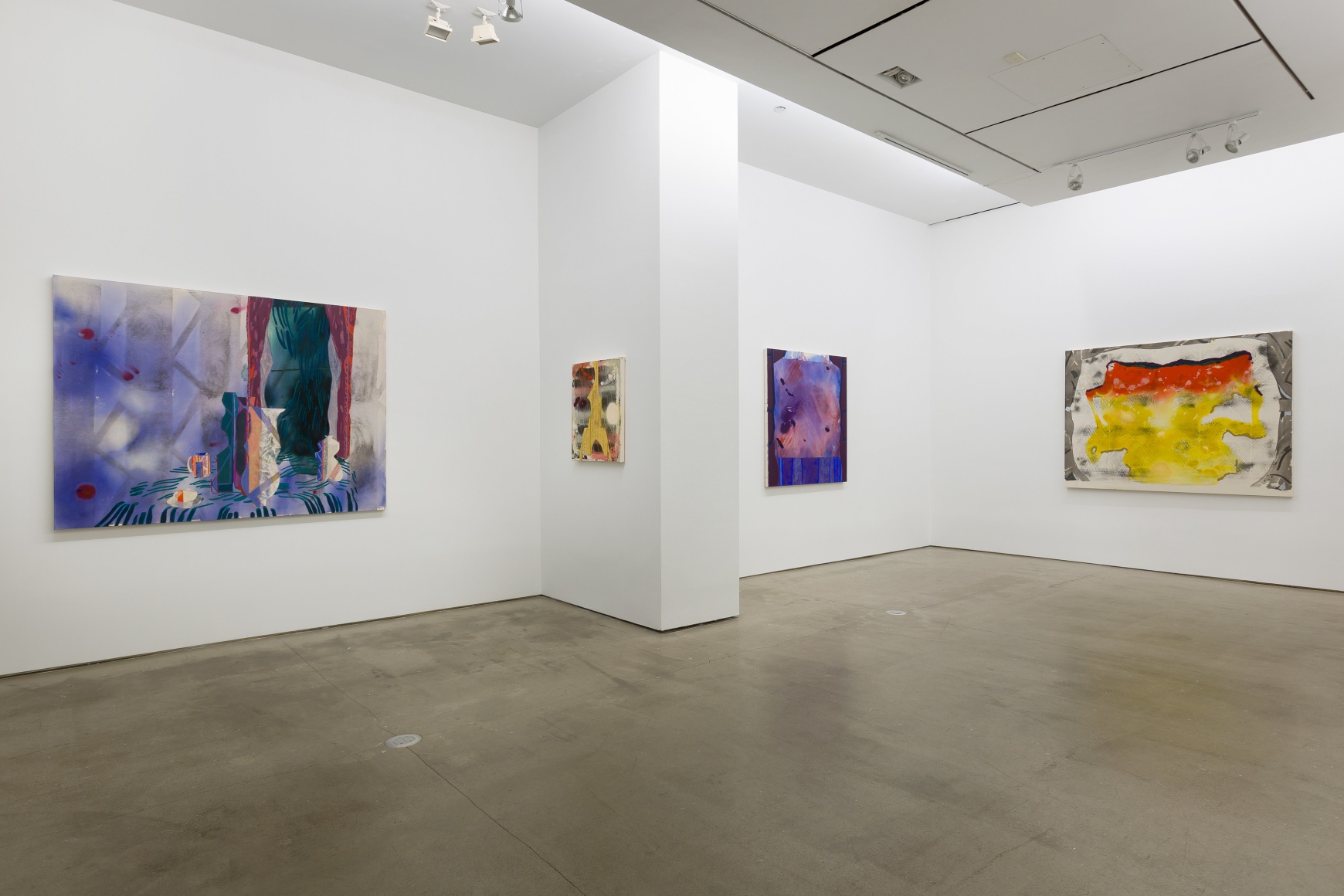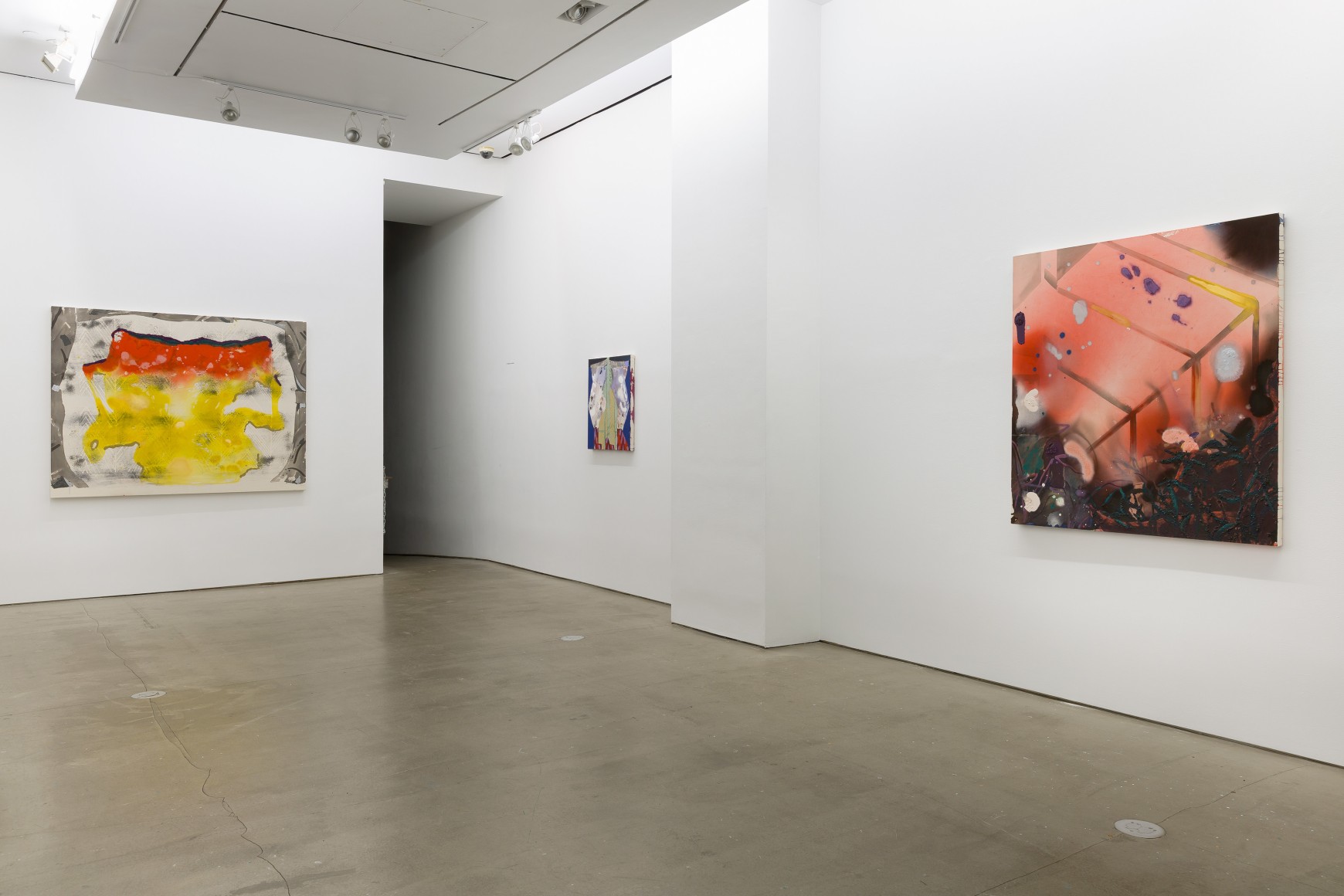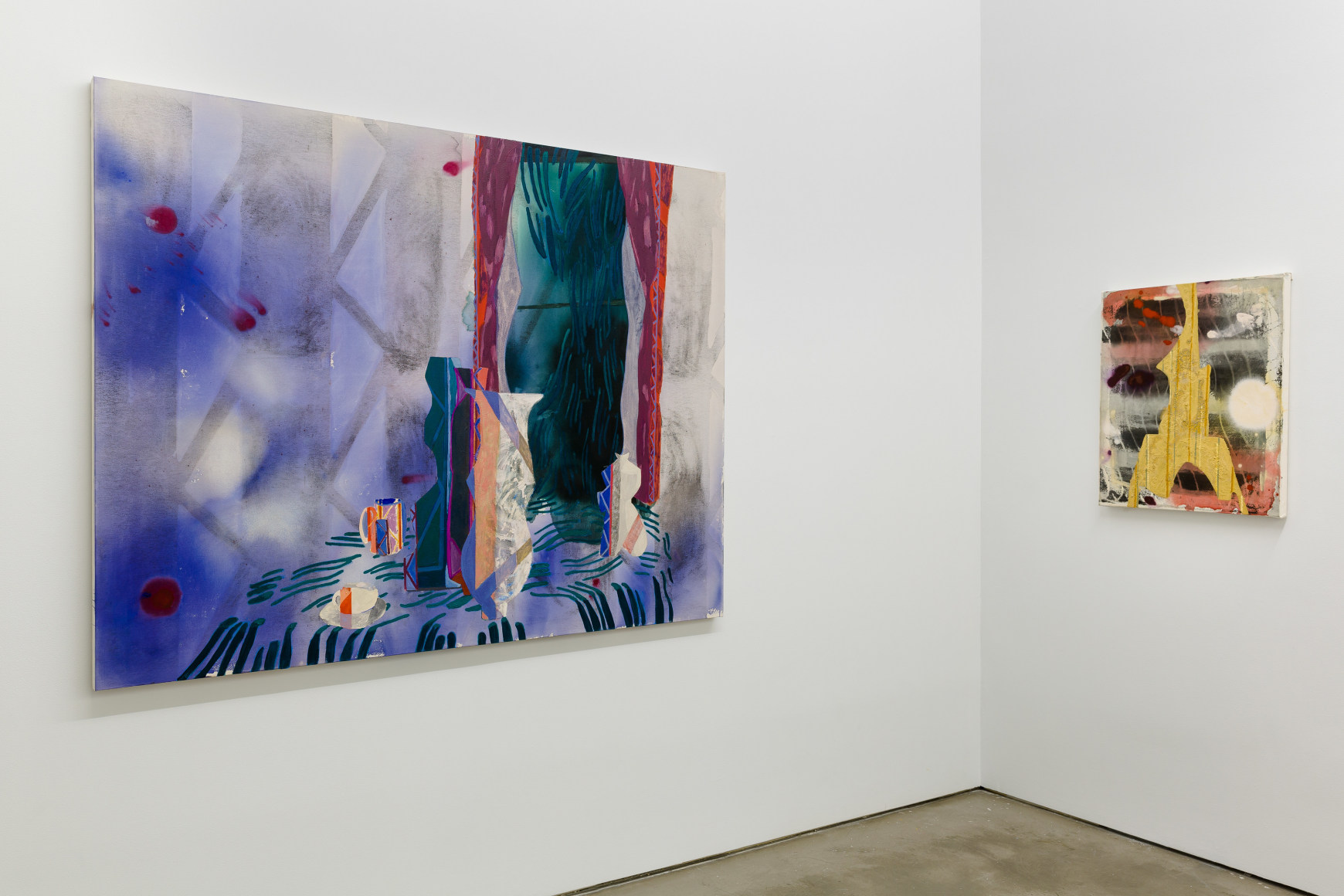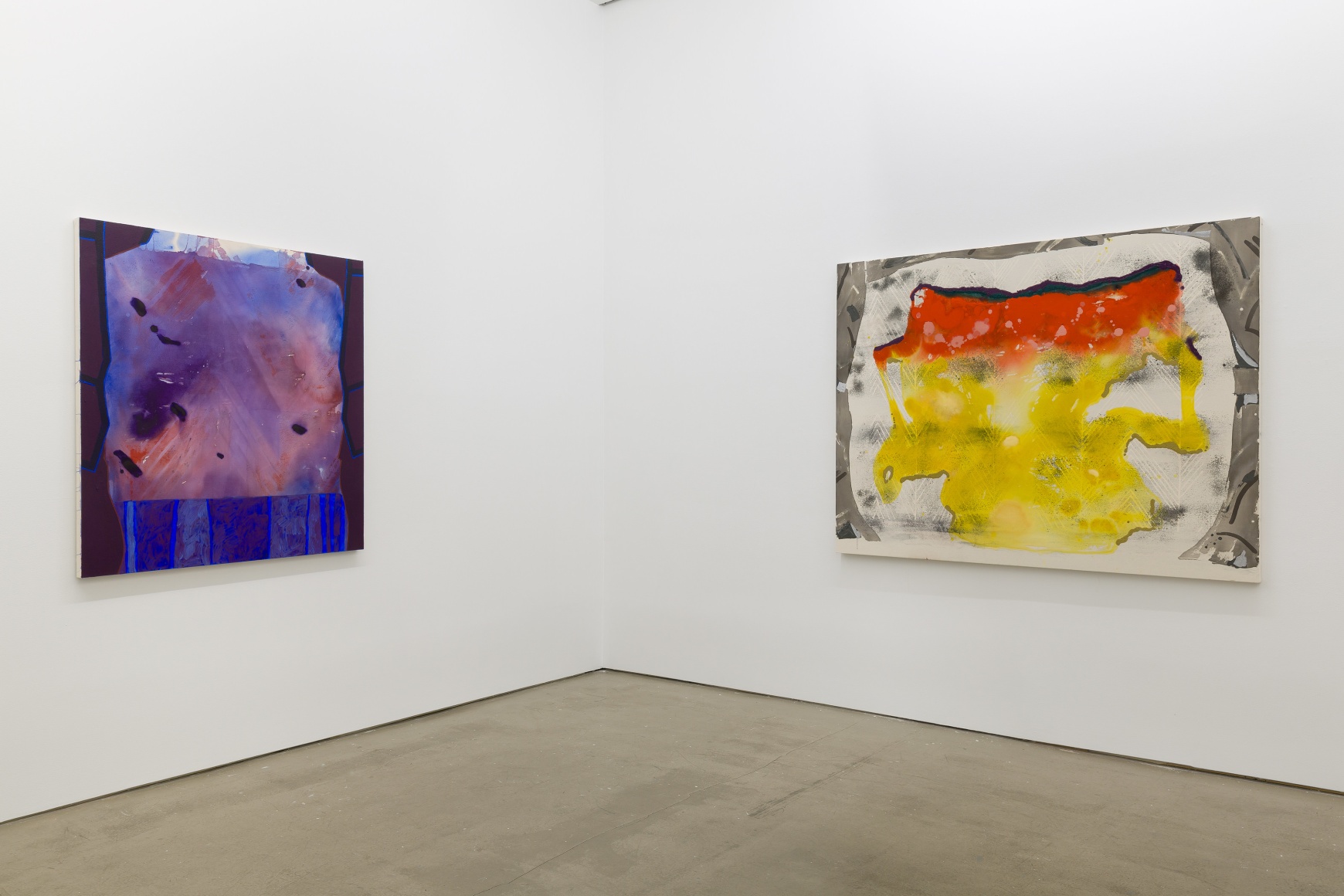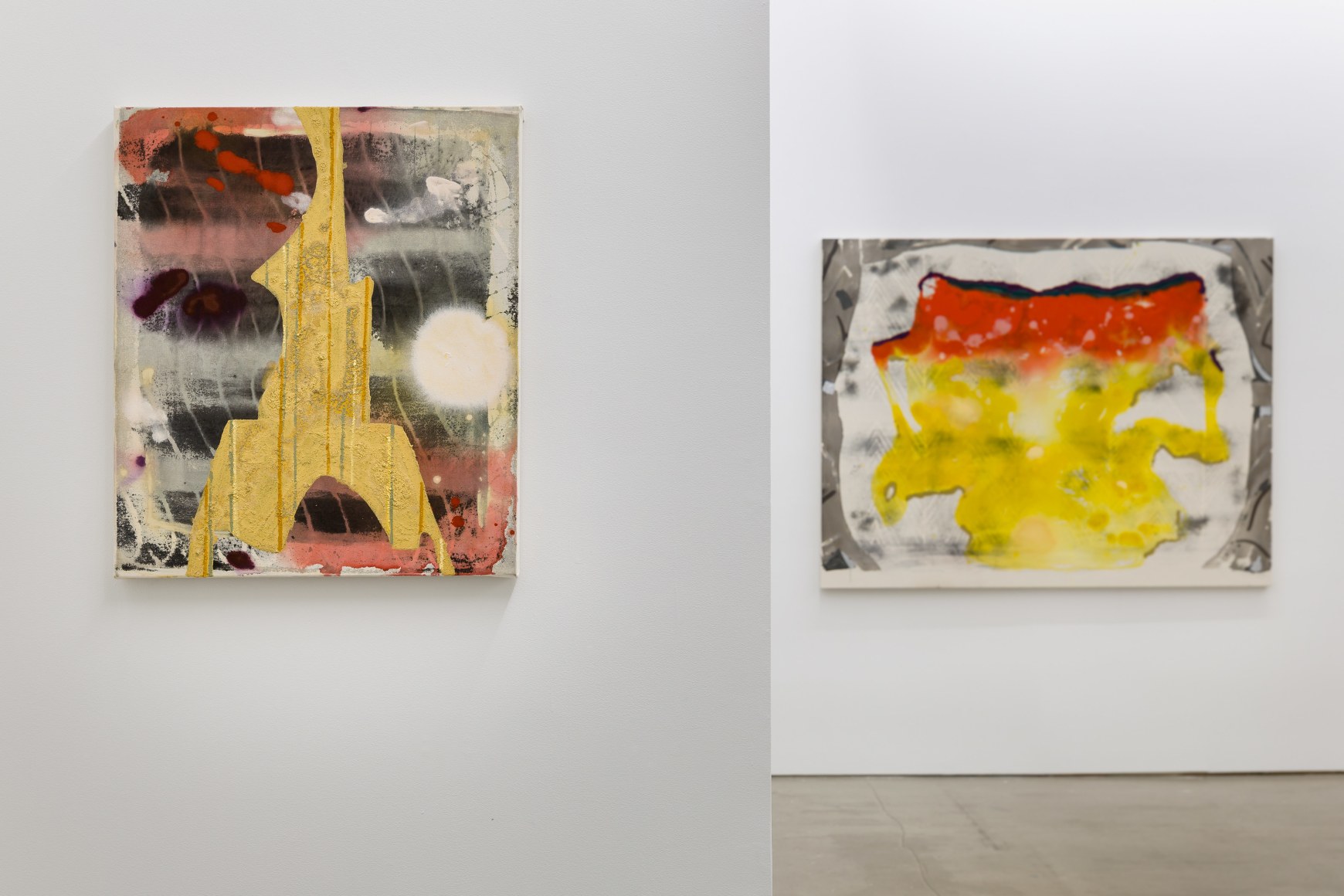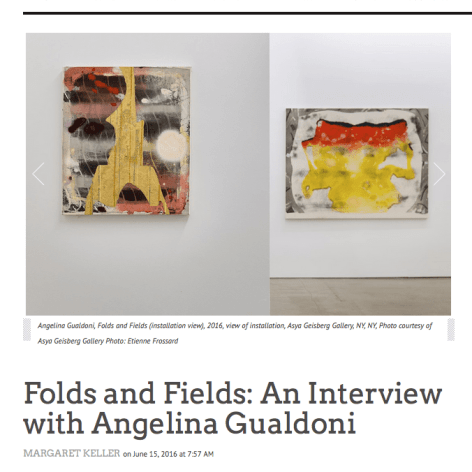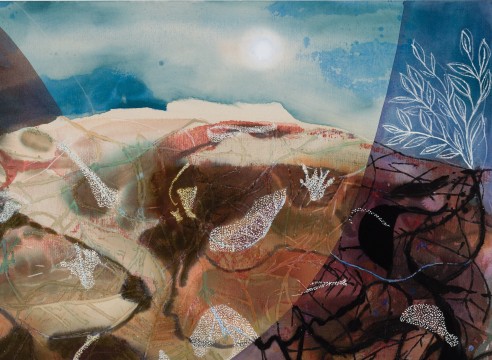
Asya Geisberg Gallery is proud to present "Folds and Fields"; an exhibition of new paintings by Angelina Gualdoni. This new body of work continues Gualdoni's interest in still life and interiors as the locus of multiplicities, emphasizing simultaneity of spaces, labors, and attentions.
Well known for her approach situated in Color Field painting, Gualdoni begins her paintings by pouring acrylic paint directly onto the canvas, creating overlapping layers of capricious and unpredictable ground. Connecting lineages of stain painting and textile dying and design, she complicates field painting space by incorporating a pattern painted on the backside of the canvas, creating a metaphor from the seepage of paint for the impermeability of boundaries such as front and back, and before and after. These textile patterns, sourced from early-20th century women artists such as Sonia Delaunay or Barbara Stepanova, take on architectural scale and form the backdrop for interiors and table-top tableaux. As these women artists, some from the Bauhaus school, worked both as painters and as textile designers, Gualdoni places equal emphasis on their genre-blending careers as on their insistence on inserting lived experience into the constricted categories of fine art.
The objects in Gualdoni's paintings - cups, vases, tables - are enlarged to a scale that suggests architecture or bodies, becoming columns, curtains, and stages floors. Patterns, which on the rear side are regular and grid-based, are sometimes reiterated onto these objects in disconnected fragments, reflecting a shift from regular intervals to an irregular perception of time, where minutes can flow and alternately collide at varying perceptual speeds. Thicker impasto brushwork and passages of highly textured paint compete with delicate poured areas, causing the paintings to vibrate with tension as areas jump forward or recede, and quickly moving watery paint abuts logy lumpy areas. Edges veer from thickly drawn lines, to lacy-edged coagulated pours, to dotted stains from the backside that come and go with no clear end or beginning. Gualdoni conceptualizes these passages and borders as metaphors for the way our work life bleeds into our home life, or studio practice battles left-brain articulation, and how no definition can claim authority, and no delineation declare impermeability.

